| Japanese | English |
Until last time, information about the rotational speed and the condition of a motor has been analyzed from operation sound. The motor was measured with no-load and in the state of the maximum operation. This time, the dynamic characteristics of a motor performance is analyzed. To do this measurement, motor's rotation speed is increased and decreased by changing the operating voltage, and the sound is recorded throughout the operation.
| Date | 7 Sep. 2002 |
| Place | Apartment (Tokyo, Japan) |
| Microphone | SONY ECM-MS957 |
| Personal computer | DELL INSPIRON 5000e |
| OS | Windows 2000 Professional |
| Software for sound reproduction | Windows Media Player |
| Software for measurement and analysis | Realtime Analyzer and Sound Analyzer of DSSF3 |
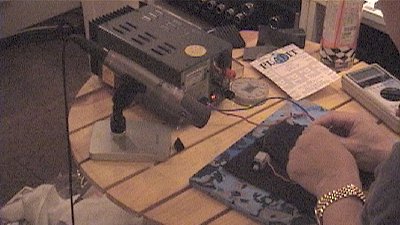
By using the Sound Analyzer of DSSF3, dynamic characteristics of sound is analyzed with the analysis time of 1 / 100 seconds and the analysis interval of 5 / 1000 seconds. Sound was measured for a slot racing motor (MABUCHI MOTOR FC-130S, DC12V). The same procedure can also be used to measure the motor of the radio control car.
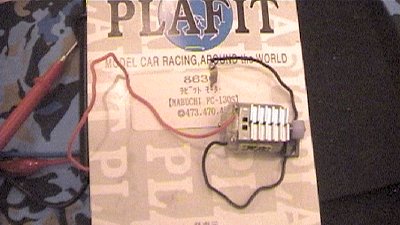
Stabilization power supply. Operation voltage is 12.27 V.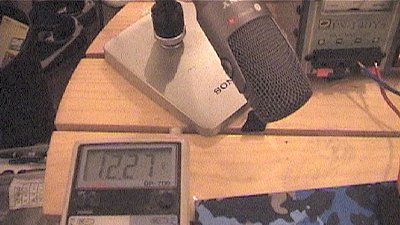
To analyze many data, it is important to record sound at first. Then, the analysis and comparison become easy. The experiment in this page was done as follows. Step by step instruction of the running ACF measurement can be seen here.
Below is the running ACF of a motor sound that operates by a constant voltage of 12.28 V.
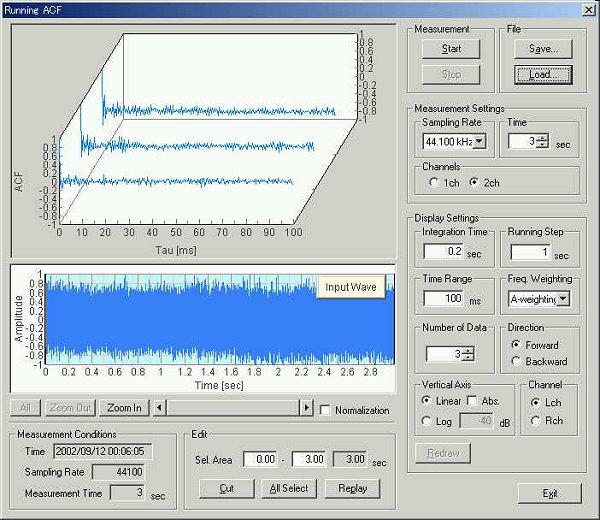
Click the "Load" button to open the file management menu of the
running ACF measurement. If the data is already saved, those data can be seen
repeatedly. To save data, click the "Save" button on the main window.
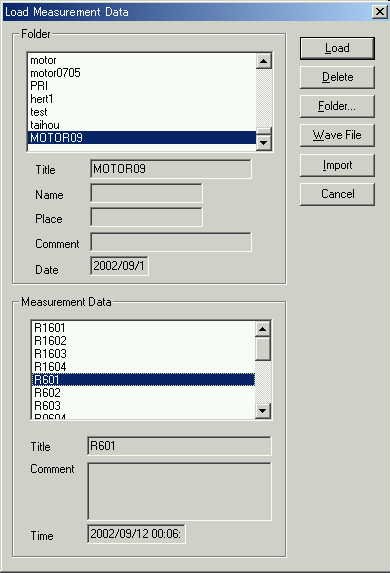
Sound analyzer is started. Saved data are loaded.
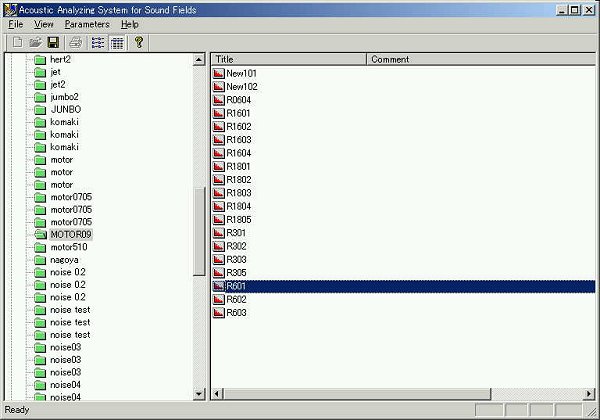
Calculation conditions. This time, it was analyzed in running step of 0.005 sec and integration time
of 0.01 sec. It means that the data frame of 0.01 s is analyzed in every 0.005
s.
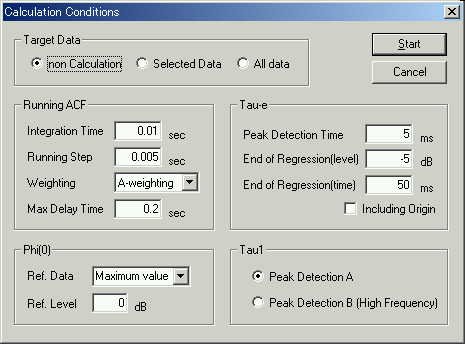
Analysis results were exported as a picture file. The autocorrelation
function is displayed in the bottom right. From this graph, we can see the
highest peak at 2.2 ms. The rotational speed becomes 1000 / 2.2 * 60 = 27272rpm. The strength of the pitch at this time is about 0.7.
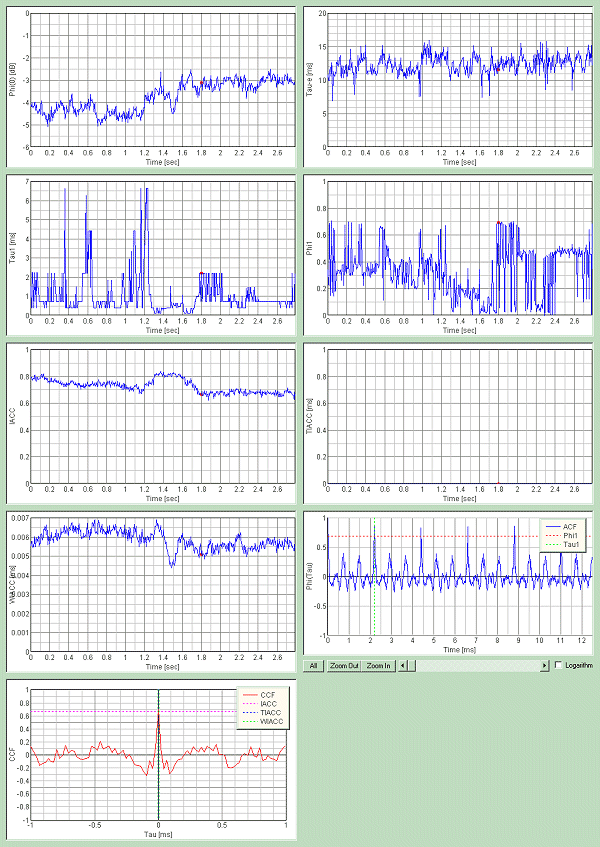
Running ACF measurement of R6 motor. This time, the motor was connected to the
stabilization power supply (12.28V). It was started suddenly, and
then it was stopped immediately.
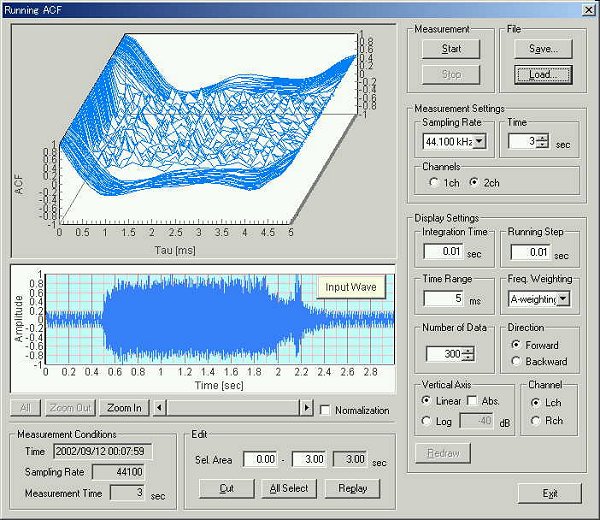
Analysis by SA.
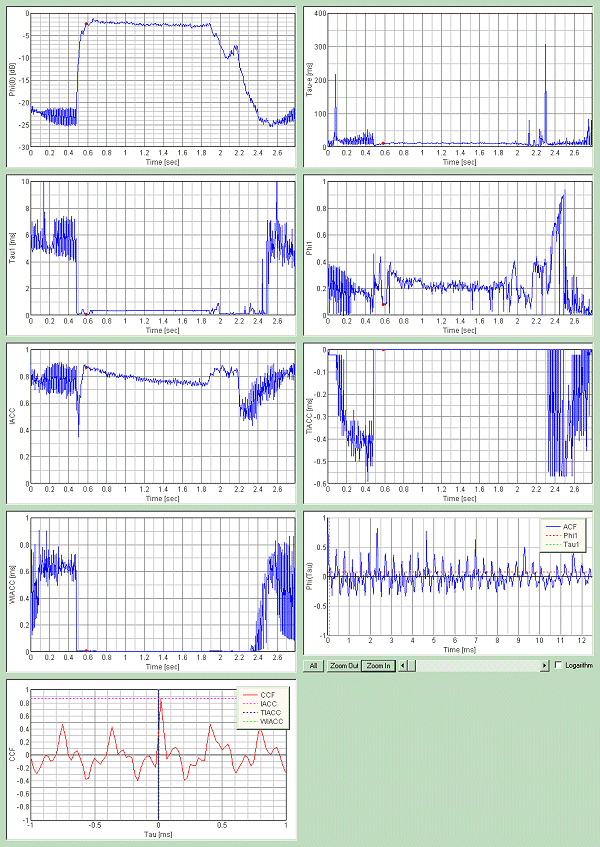
It is the graph of the ACF at 0.49 seconds after the rotation began. The
peak at 2.95 ms is clearly seen.
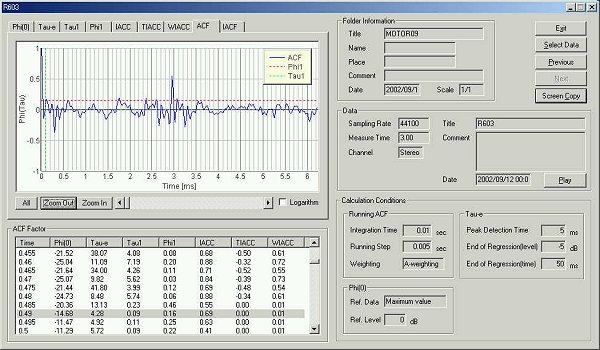
It is the graph of the ACF at 0.55 seconds. The peak at 2.49 ms is clearly
seen.
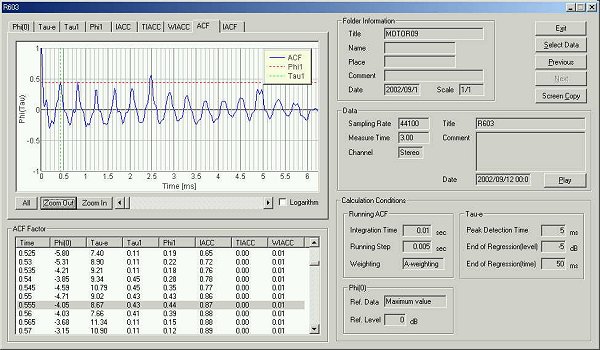
It is the ACF at 1.8 s. Now the motor is rotating stationary. The highest
rotation of this motor is clearly seen at 2.2 ms.
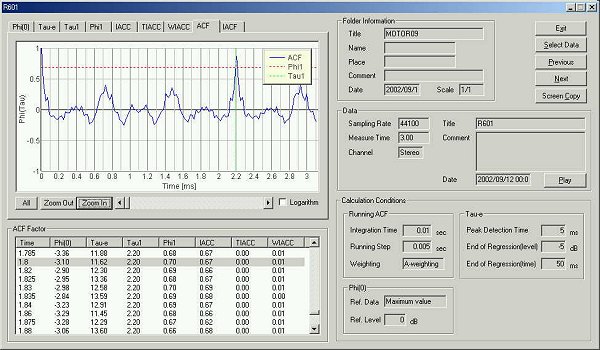
The fundamental period at 2.2 ms is translated to the rotational speed as 1000 / 2.2 * 60 = 27,272 rpm.
In the table, the fundamental frequency is picked up from the data at the time of starting.
| Time
sec |
Fundamental period
ms |
Rotational speed
rpm |
φ(0) | te
ms |
φ | |
| R603 | 0.475 | 0 | 41.8 | |||
| 0.480 | -24.73 | 8.48 | ||||
| 0.485 | 5.70 | 10526 | -20.36 | 13.13 | 0.60 | |
| 10 ms after start (20330rpm) | 0.490 | 2.95 | 20338 | -14.68 | 4.28 | 0.55 |
| 0.530 | 2.80 | 21428 | -5.31 | 8.9 | 0.30 | |
| 0.545 | 2.50 | 23529 | -4.59 | 10.79 | 0.40 | |
| 70 ms (24096rpm) | 0.555 | 2.49 | 24096 | -4.05 | 8.67 | 0.55 |
| 0.565 | 2.40 | -3.68 | 11.34 | 0.75 | ||
| 0.1 s after start (over 26000rpm) | 0.585 | 2.30 | 26086 | -2.38 | 11.58 | 0.80 |
| 0.605 | 2.25 | 26666 | -2.62 | 12.76 | 0.85 | |
| R601 | 2.24 | 26785 | ||||
| 2.22 | 27027 | 0.80 | ||||
| Max. rotation averaged for 10ms | 2.20 | 27272 | 0.70 |
As we can see from the table, this motor reaches for 20,330rpm at 10 ms after start, 26,000rpm at 0.1 sec. The maximum rotation is 27,272rpm.
This time, I measured the dynamic characteristics of a motor by the fine analysis of sound in a step of 5/1000 seconds.
September 2002 by Masatsugu Sakurai